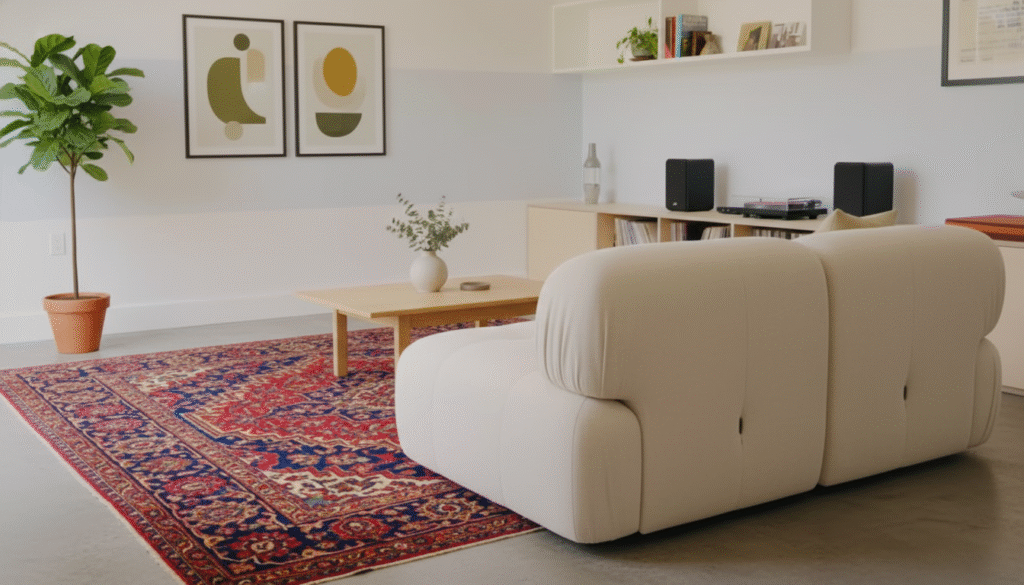
Minimalist Home Decor Ideas
Minimalism often gets misunderstood. People hear the word and think of empty rooms, cold spaces, or homes that feel more like galleries than places to live. But true minimalist decorating isn’t about having less for the sake of it — it’s about making more space for what matters. It’s about calm, clarity, and intention. It’s about walking into a room and feeling your mind exhale.
When you strip a space back, what’s left becomes more meaningful. The texture of a linen curtain, the soft curve of a wooden chair, or the way morning light falls across an uncluttered floor — these details become the story. Minimalism lets your home breathe, and in that quiet, you begin to notice beauty in simple things.
A minimalist home doesn’t need to be stark. It can be warm, layered, and deeply personal. Start by thinking less about what to remove, and more about what you want your space to say. If an object doesn’t serve a purpose or bring you a sense of calm or connection, it probably doesn’t need to be there. That doesn’t mean living without comfort — it means curating carefully, so that every piece feels intentional.

Color plays a big part in setting this tone. Soft neutrals, muted greys, off-whites, and natural wood tones create a foundation that feels cohesive and peaceful. Think of color as a backdrop rather than a focal point — it should hold the space together, not compete for attention. Add subtle contrast with texture instead of bold hues: a wool throw over a cotton sofa, or a matte ceramic vase against a smooth timber surface. These quiet combinations create depth without noise.
Furniture in minimalist spaces tends to have clean lines and strong shapes. Choose pieces that feel balanced — light enough to move easily within the room, but substantial enough to ground it. Low-slung sofas, simple wooden tables, and open shelving keep a space feeling open and calm. Avoid overfilling your rooms. Let there be space between things; it gives your eyes somewhere to rest and helps your home feel bigger than it is.
Lighting, too, is essential. Natural light is your best friend, but soft, diffused lamps and warm bulbs can create the same sense of ease after dark. Avoid harsh overhead lights and instead focus on layered sources: a floor lamp near a reading chair, a candle flickering on a side table, or a wall sconce that casts a gentle glow. The goal is not brightness — it’s atmosphere.
Decor in minimalist homes works best when it feels personal but quiet. A single piece of art that makes you feel something, a sculptural vase with one branch, or a well-loved book stack on a simple shelf. These moments bring warmth and individuality without clutter. It’s okay if your space feels a little unfinished — that’s part of the charm. Minimalist decorating isn’t about achieving perfection; it’s about leaving room for life to happen.
Here are a few simple ideas to try:
- Choose multi-purpose furniture that reduces visual clutter — a bench that doubles as storage, or a nightstand with a hidden drawer.
- Use natural materials whenever possible: linen, wool, jute, clay, and wood bring quiet texture to a simple space.
- Keep surfaces mostly clear, but allow for one or two objects that make you smile — a handmade bowl, a framed photo, a candle you actually light.
- Layer lightweight curtains to soften natural light and blur harsh lines.
Keep greenery minimal but meaningful: one large plant instead of five small ones.
In the end, minimalist decorating isn’t about rules — it’s about rhythm. It’s about finding that point where everything in your space has room to exist, and so do you. Your home should feel calm but alive, intentional but easy, simple but not sterile. It’s a way of living that makes space for stillness, clarity, and the quiet joy of being surrounded only by what you truly love.
